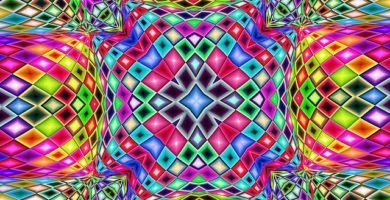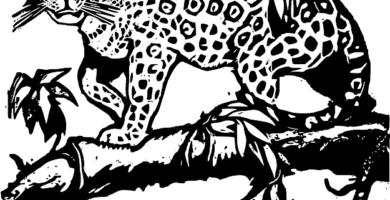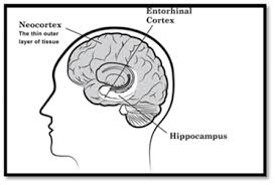
Since ancient times, people, within the social groups they belong to, have asked themselves many transcendental questions about life in general, and about their lives in particular, especially about the purpose or meaning of life. And they have tried to answer them. Such responses form the basis of his worldview or cosmovision, the view of himself, the world and the universe, and the general framework in which the person thinks and acts.
Myths, rites and worldview…
That worldview, generally translated in the form of beliefs, myths and rites, did not initially constitute a rational approach to the world, but rather was a kind of emotional, intuitive knowledge expressed symbolically.
December 21, 2019

🥇 The Great Amazonian Legend
December 14, 2019

Amazonian myths and legends about ayahuasca
November 28, 2019

Amazonian Indigenous People Cosmovision – Beliefs, Taboos, Myths and Legends
October 5, 2019

Myths of the Amazon Rainforest
That knowledge was “rationalized” to the extent that it nourished a thought and a behavior, when the person interacted with the concrete world (Restrepo 1998).
The myth constituted a form of incorporation of the sacred or supernatural, the energy of the cosmos, within the framework of culture, seeking to explain the origin and meaning of life.
The rite, for its part, is the way in which man ordered sacred time (Eliade 1991).
Biological evolution and cosmovision…
But man has not always acted in this way, because to do so he must first have developed his cerebral neocortex, which is the conscious part of the human brain.
The neocortex is responsible for reasoning and performing most of the sensory perceptions. There is also the register of the symbolic.
The conformation of the brain changed as man evolved (Homo habilis, H. ergaster, H. antecessor, H. heidelbergensis, H. erectus).
The evolution of the genus Homo began about 2.3 million years ago, but Homo sapiens about 500,000 years ago, with a larger and more sophisticated tooth structure and brain than its predecessors.
The evolution manifested itself not only in the elaboration of cave paintings and engravings and in the creation and improvement of work, hunting and fishingtools, but also in its social and artistic expressions.
October 19, 2019

Amazon River fishing
October 19, 2019

Places for fishing in the Amazon River Basin: the cocha and the lagoons
October 11, 2019

Hunting and Fishing in the Amazon Rainforest
The human being also developed his spirituality, leading him to carry out spiritual practices, framed within what has been called a “natural” religion or proto-religion.
During the Lower Palaeolithic, human beings begin to bury their dead and become interested in the afterlife.
Those changes that are taking place in his anatomy, physiology and brain capacity, were also produced in his environment, and in the way in which the hominid, in the process of becoming “man”, builds an explanation of the world and inserts himself into it. .
That is, man builds his worldview, which allowed him to relate to nature, deities and other members of his community (Restrepo 1998).
What is the neocortex?
The participation of the neocortex is very important in the changes that are taking place in the brain configuration of the human being.
The neocortex is a thin sheet of gray matter, barely a few mm thick, organized in differentiated layers according to the function performed.
There, in the neocortex, perception, thought, judgment and decision take place, as well as the process of managing impulses, emotions and behaviors, necessary for coexistence with individuals of the same species.
Higher mental functions and executive functions are performed in the neocortex.

Source: John A Beal, PhD Dep’t. of Cellular Biology & Anatomy, Louisiana State University Health Sciences Center Shreveport / CC0
Executive functions are very important to effectively adapt to the environment and achieve the goals that a person sets for himself (Radnikow, Foldmeyer 2018; Fuster 2014; Vendejo-García, Bechara 2010; Valverde, De Carlos, López 2003).
paleocortex and archicortex
Along with the neocortex there are two more parts: the paleocortex, which is responsible for olfactory functions, and the archicortex, which is the instinctive or “animal” part of the brain, the most ancient part of the human brain, which appeared millions of years ago in our evolutionary line, which takes care of the basic instincts.
There, in the limbic system, the hippocampus acts, which also regulates some functions of the organism, such as body temperature, sleep, hunger, mood (Guyton, Hall 2011; Kandel, Schwartz, Jessell 2001).
worldview and beliefs
In a worldview, beliefs occupy a very prominent place, since they are responsible for establishing the guidelines of our behavior.
Beliefs are a form of mental representation and correspond to one of the basic components of a person’s conscious thought.
Not only as it relates to ordinary beliefs, but also to religious and supernatural beliefs (Kruger, Grafman 2013; Krueger, Barbery, Grafman 2009; Kapogiannis, Barbery, Su, Zamboni, Krueger, Grafman 2009).
Neuroscience considers that there is a close relationship between the religious or mystical or spiritual practice of a person and the activity developed in the cerebral neocortex, particularly in the middle frontal lobe of the brain.
On the other hand, it is known that beliefs precede and guide the behaviors of individuals.
The development of the neocortex is fundamental for the adaptation to social norms and for the fulfillment of the responsibilities that one has within a social organization.
For a belief to be acquired, a mental representation must first occur, and that belief must be evaluated in some way.
This process of representation and evaluation occurs in the medial prefrontal cortex, that is, in the neocortex.
In this way, social and moral values are acquired, long-term goals are established, and one learns to control emotions and behavior (Asp, Ramchandran, Tranel 2012; Muramoto 2004).
In this way, the worldview that guides the group, any group, is configured, and that corresponds, in essence, to an imaginary and collective representation of the functioning of the world, of its creation and its creators, and that is transmitted, from generation to generation. in generation, through myths and is staged through rituals.
conceptions
A worldview expresses, in essence, an overall vision of the conceptions that man develops about the world he inhabits, and the way in which he inserts himself and orients himself in that world.
But these are not conscious conceptions, products of thought.
…according to Dilthey
They are not born from the pure will to know of the individual, but from the vital activities linked to the experience of his life and closely related to his psychic totality, and to environmental factors (weather, relief, availability of natural resources, etc.) present in the environment where it operates (Dilthey 1954, VIII, 115-119).
For Dilthey, all conceptions of the world have the same structure. A structure that consists of a connection where it is decided about the meaning and the sense of the world.
That connection is, for Dilthey (1954, VIII, 115), the result of three psychic moments that intertwine in the understanding of the universe:
- a) the representative moment of a certain image of the world,
- b) the affective-impulsive moment resulting from assigning a value to things, and
- c) the volitional moment, in which the person feels above nature and believes he owns it.
However, it is difficult to understand precisely what exactly constitutes a conception of the world.
…according to Viktor Frankl
The psychoanalyst Viktor Frankl (1973) points out that:
“The content of a conception of the world can never be fully explained starting from the psychic roots of its creator”,
…because there are always some elements that are beyond our control and that we do not fully understand why they occur.
Beliefs are largely responsible for the worldview that a social group has built over time, and that is transmitted intergenerationally.
Until a few years ago, it was believed that our life was determined by an equal interaction between the influence of genes and the environment, and that both factors were equally responsible for the beliefs and personality of individuals.
That was until recently the great debate between nature (nature) and nurture (nurture), that is, between genetic factors (innate) and acquired factors (derived from individual experience and the environment).
Much more is now known.
Genetics and human behavior (2020)
Genetics (genes, DNA), according to Natham Gillespie, of the Queensland Medical Research Institute, Australia (El País, Madrid, 10.27.2001), can be responsible for 60% of an individual’s personality, but the environment or The environment is essential for genes to express themselves.
As said by Dr. Cori Bargmann, a researcher at Rockefeller University, at the European Federation of Neuroscience Societies Congress in July 2012:
“Genes are like letters, they are essential to form words, but it is the environment that builds sentences and gives them meaning.”
Animal behavior is the result of the interaction between genes and the environment. Genes determine life, but that determination is activated or deactivated by the influence of the environment or the interaction of genes with the environment (Ridley 2003).
A living being tends to free itself from the uncertainty of the rest of the world, reacting to fluctuations in the environment.
Phenotypic plasticity
This ability to respond and adapt, which produces changes in character, is known as phenotypic plasticity(Wagensberg 2000; Nijhout 2004; Andrade 2005).
The environment can be shared (family and social coexistence) or not shared (what comes from individual experiences, which make the difference between one subject and the others).
This environment is a repository of information, which can become part of the internal world of mental representations of a person.
Living beings are encoders of information that, when accepted, become habits (Andrade 2005).
epigenetics
Epigenetics, which studies the interactions between genes and the environment, goes even further, postulating that genes do not totally control our biology.
It is the environmental cues and our perceptions of those cues (“what we think about what happens to us”) that determine our cellular behavior and the way our genes express themselves.
Our biology adapts to the environmental information that our senses collect from the environment, and to the interpretation that the mind makes of that information collected from the environment.
The nervous system is the mediator between environmental signals and cell behavior, regulating our biological mechanisms with the release of biochemical substances.
Beliefs, perception, thoughts and behavior
But -beliefs return-, it is the beliefs, lodged in our unconscious mind, that modify our perception.
This perception of what happens to us is essential for the mind to decide how to act.
In such a way that our perception, and the way our mind interprets it, is at the origin of our belief system that, in the first instance, generates thoughts and behaviors, and builds our worldview.
If the belief changes, the perception, the thoughts and the neurochemical responses of our body also change.
That is, if the mind believes, the body “believes” too, because mind and body form a psychosomatic unit.
This aspect is important to understand the action of a shaman and his healing role, which acts, at the same time, on the mind (the “spirit”) and the body.
That is to say, it acts on the physiological manifestation of the disease and on its very root, a belief or representation lodged in his mind as a belief.

Dr. Rafael Cartay is a Venezuelan economist, historian, and writer best known for his extensive work in gastronomy, and has received the National Nutrition Award, Gourmand World Cookbook Award, Best Kitchen Dictionary, and The Great Gold Fork. He began his research on the Amazon in 2014 and lived in Iquitos during 2015, where he wrote The Peruvian Amazon Table (2016), the Dictionary of Food and Cuisine of the Amazon Basin (2020), and the online portal delAmazonas.com, of which he is co-founder and main writer. Books by Rafael Cartay can be found on Amazon.com
Related Posts
September 8, 2020

Amazonian People Cosmovision – Bolivia, Colombia and Ecuador
September 6, 2020

Rainforest People Cosmovision and Amazonian myths
September 5, 2020

Introduction to the Amazonian People Cosmovision
This post is also available in:
![]() Español (Spanish)
Español (Spanish)

